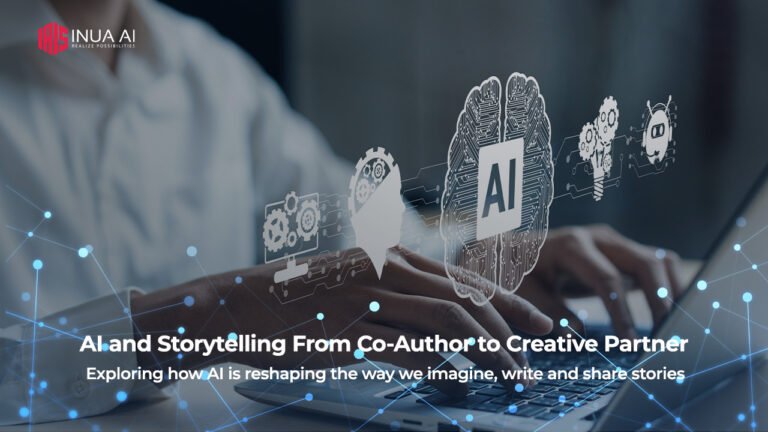Introduction
Storytelling has always been one of humanity’s most powerful tools — shaping cultures, inspiring action, and preserving history. For centuries, the role of storyteller was uniquely human, fuelled by imagination, emotion, and lived experience. Now, Artificial Intelligence (AI) is stepping into the creative arena, not as a replacement for human voices, but as a collaborative partner. From assisting novelists to powering interactive worlds, AI is reshaping how we tell and experience stories.
The Shift: AI as a Co-Creator
Traditional storytelling has always relied on the writer’s ability to weave words into worlds. But AI tools can now suggest plot twists, generate dialogue, or build immersive settings at remarkable speed. Platforms like Sudowrite help writers overcome creative blocks by suggesting stylistic changes, describing vivid scenes, or providing alternate narrative perspectives.
In the gaming world, AI Dungeon offers players a chance to interact with a living, evolving story that adapts to every choice. Instead of fixed scripts, these narratives unfold in real time, fuelled by AI’s capacity to process and respond instantly.
Beyond Words: AI in Visual and Interactive Storytelling
The rise of AI-generated art and video means stories are no longer bound to text. AI tools like DALL·E and Midjourney allow authors to visualise characters, settings, and even entire worlds, before a single chapter is written.
Streaming platforms are experimenting too. Netflix has tested AI to analyse audience preferences, helping guide the development of narrative structures and story arcs that resonate more deeply. Imagine an interactive film where the plot changes based on your emotional reactions — this is where AI and storytelling are headed.
Why This Matters for Creatives
AI accelerates idea generation, but its true value lies in expanding creative possibilities. A writer struggling with dialogue can receive multiple versions in seconds. Screenwriters can quickly explore “what if” scenarios without weeks of rewrites. Small creative teams can produce cinematic experiences that once required massive budgets.
However, AI does not replace the human element — the heart, emotion, and cultural nuance still come from the creator. Think of AI as a powerful lens, not the camera itself.
Real-World Applications Already in Motion
Publishing: Authors use AI to draft chapters, then refine them with their voice.
Gaming: Interactive adventures evolve based on player actions, driven by AI.
Film & TV: Studios use AI to simulate how different endings might impact audience satisfaction.
Marketing: Brands craft personalised customer stories using AI-driven narrative generation.
Ethics and Creative Responsibility
With AI’s capabilities come important considerations. Plagiarism risks, data bias, and ownership concerns are all part of the conversation. Creators must remain vigilant to ensure that AI-assisted work is authentic and respectful of intellectual property. The best collaborations will be transparent, blending AI’s speed and scope with human integrity and originality.
The Future of AI Storytelling
As AI becomes more sophisticated, we can expect richer, more personalized storytelling experiences — from novels that adapt to your mood to documentaries that answer your questions in real-time. The future will not be about humans versus AI, but humans with AI, creating stories that could never have existed otherwise.
Final Thought:
Storytelling has always evolved — from oral traditions to print, radio to film, and now AI-enhanced creation. The technology may change, but our need for stories that move us remains. AI is not the author of our future, but it can be the co-author of the stories we choose to tell.




